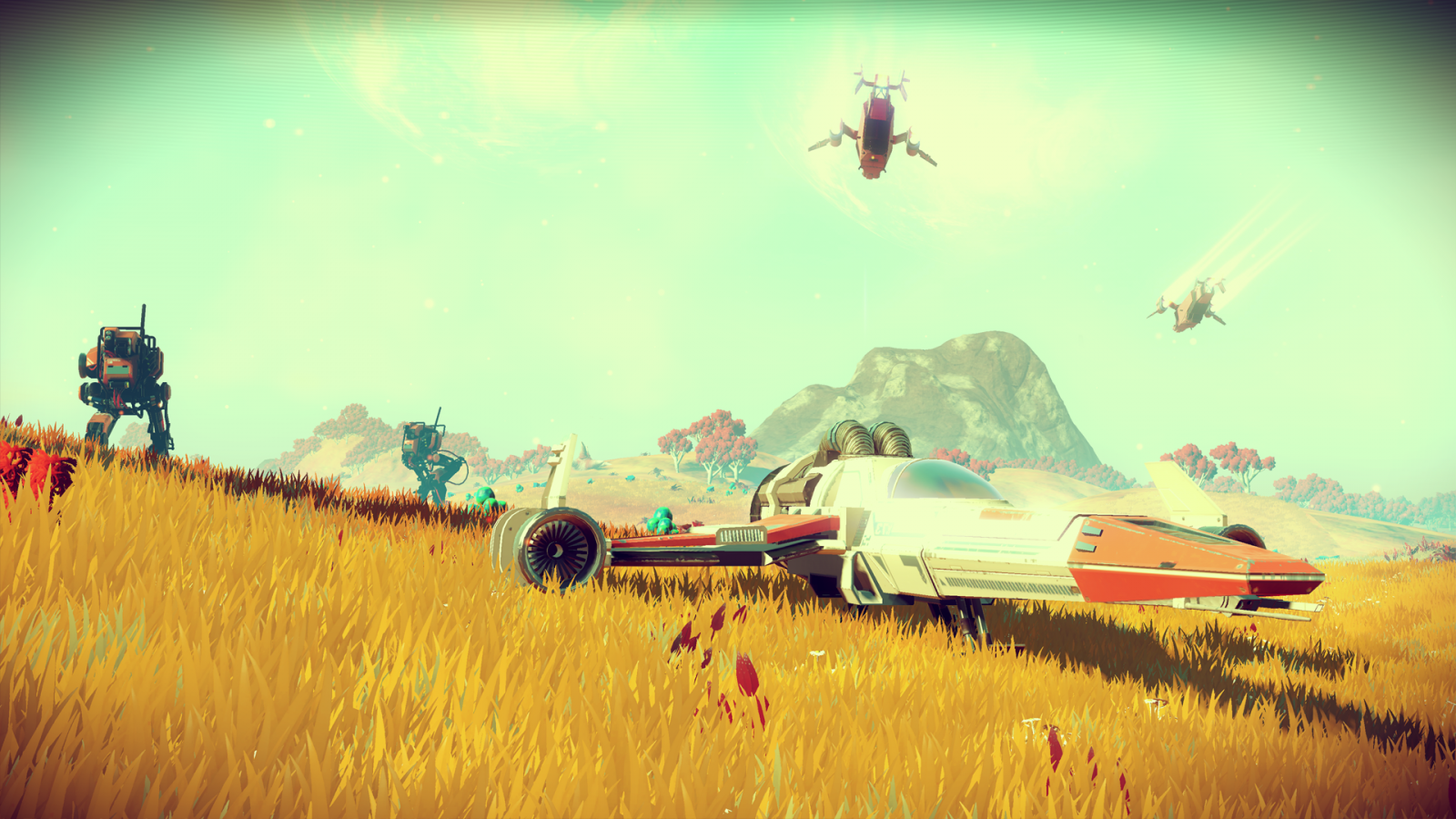No Man's Sky early impressions: A daunting but thrilling start to a galactic adventure
First impressions of the opening few hours of Hello Games' PS4 and PC epic.
It's strange actually playing No Man's Sky after what's felt like an eternity of build-up. Strange, that is, until you break through the atmosphere of the first procedurally generated planet your faceless, nameless explorer has crash landed on. Then, there's that thrill: the same thrill thousands of people experienced watching Hello Games' ambitious sci-fi debut two and a half years ago.
Up until that point, No Man's Sky is slow, even a bit of a slog. Unable to fly, the player has to walk and run across an alien landscape searching for the requisite minerals to get their ship going again. Of course, given each player will start on a different planet, some may fly through this initial test but others will not.
The slow pace works in not setting unrealistic expectations. Those expecting No Man's Sky to be a first person shooter like Halo will be in for a shock, this is a game about exploration and discovery. There's action of course, but this is a game about long flights over and toward glorious vistas only you are ever likely to see.
I've seen just a handful of those sights now: flying low over oceans, soaring over mountains, toward space stations and distant worlds. My first few hours with the game we spent getting to grips with the game's complex crafting systems, only to be distracted by a cave begging to be explored (plus caves I've fallen into), an outpost with new blueprints, aliens and goodies within, or an animal hunting me down for its lunch.
No Man's Sky is daunting in its scope, and so will take time to be able to critique properly. That's why you'll see so many publications, including this one, holding off on their reviews. Hello Games has created something so vast it'll take enough time just to understand how it all works, let alone master its many elements.








Crafting involves collecting a dozen or so key elements and materials that are used to fuel your ship's drive and launch thrusts, that help create the warp drives that power the hyperdrive, power up you mining tool and weapons, and can be used to create upgrades and other crafting materials. There are so many materials and potential ways to use them, but the menu system works wonderfully in keeping things simple.
Groups of materials – the rarity within each group also, give or take, dictates the effectiveness as a fuel – are colour-coded. These colours are also present in on-screen markers that appear when the player activates their scanner, and in a larger amount of the plants and rocks where the minerals are found. So far I have also had no trouble in finding something when required, which is good considering I've had a near constant need to find new materials.
Early on the player will lack the inventory slots and be using the materials in such larger quantities that they will be constantly aware of what they need. This is good when it comes to educating the player in how the whole system works, but hopefully it'll become less of an issue as inventory slots are gained and the amount of materials that can be carried increases.
My journey across the galaxy is in its very early stages, but No Man's Sky is showing a great deal of promise so far. It has a long way to go however, and so do I.
For all the latest video game news follow us on Twitter @IBTGamesUK.
© Copyright IBTimes 2024. All rights reserved.






